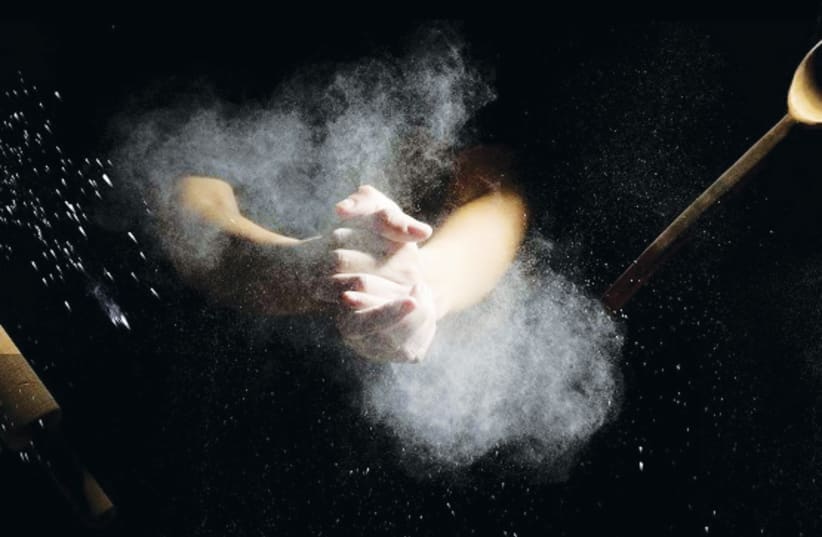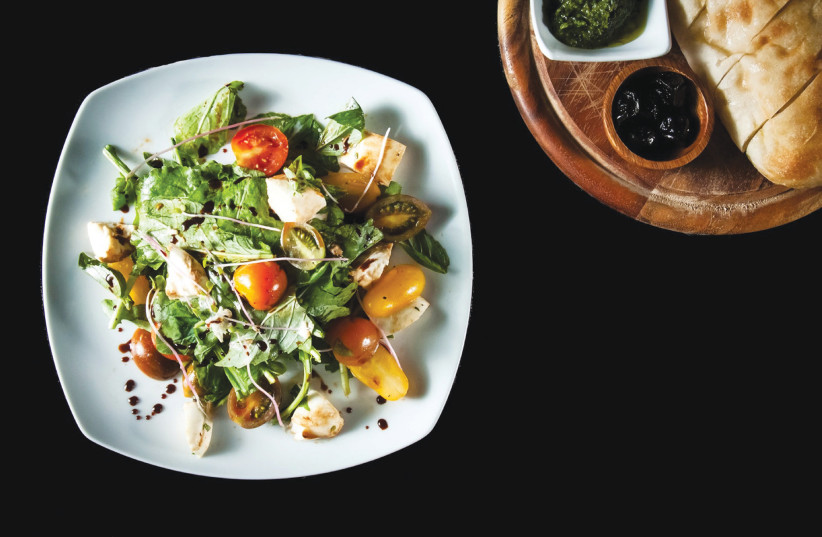On the website of the Na Lagaat (Please Touch) Center, the words emerge slowly from the shadows:
“When you are not eating with your eyes, the flavors and scents are filled with new strengths, and dormant senses come to life. When you don’t see anything, you see so much.”
This is the guiding principle behind BlackOut, the only dark restaurant in Israel, and likely the only kosher such restaurant among the other 13 worldwide. BlackOut is the culinary dimension of the Please Touch Center, a venue for theater, events and workshops whose participants and facilitators are persons with disabilities, and whose mission is to help integrate the blind, deaf and blind-and-deaf into society.
It is hard to imagine in advance what awaits at BlackOut, so this review will be as much about the experience as a whole as about the actual food. The first step is to make reservations in advance: the restaurant operates three days a week – Sundays, Tuesdays and Thursdays – and offers two seatings per night, at 6:30 p.m. and at 9 p.m.
Importantly, there is a major difference between the early and late seating: the former offers the restaurant’s Classic Menu – two courses, a main and dessert (NIS 130/150) – and the latter the three-course Premium Menu – appetizer, main course and dessert (NIS 170/190). The lower of the two prices for the complete menu is for a vegetarian main course, the higher entitles you to a fish main course.
Since BlackOut is a kosher (dairy) restaurant, there is no meat on the menu. Not surprisingly, therefore, there is no lack of vegetarian/vegan – and even gluten-free – options. Both menus include a basket of the house bread; the Premium Menu also includes an aperitif as a welcome cocktail.
Initially, diners are seated in a lighted area, where menus are distributed and orders for all courses of your meal taken. English menus are available, and one may also request an English-speaking waiter.
When all diners with reservations have finally straggled in, everyone heads for the locker area, where cellphone and purses are stored for the evening. Names are called, and small groups of about six people are assigned to your guide/waiter for the evening. The guides are all either blind or visually impaired, and they encourage everyone to ask any questions they have about their work – and in general, how they cope in a sighted world
Your guide will then arrange your group in a conga line chain – hands on shoulders of the person in front of you – and lead you through a black curtain and into a short maze of pitch blackness, until you reach the first table. he/she will help each person get seated, and then explain what is on the table: glasses, cutlery, napkins, a pitcher of water and a basket of bread with dip.
Following her directions, we managed to pour ourselves two glasses of water, without incident. By this time of night we were very hungry, so we dove right into the sourdough bread – and our first experience of blind eating literally exploded in our mouths!
I am sure I have tasted other bread as good as this excellent sourdough, but rarely have I enjoyed it so much: feeling the soft texture of the baked dough as I chewed, and biting into the crust, whose crackle I could not only feel against my teeth, but even the sound of which reverberated in my ears and head. If I had been dubious before about the effect of the heightening of the other senses once the sense of vision is neutralized, I was now a true believer.
The next challenge was to spread the invisible dip with our invisible knives onto the slices of bread. This feat seemed also to be accomplished flawlessly (although if any dip fell on the forgiving black tablecloth, I could not tell – or feel guilty about). Again, the flavor of the highly seasoned tomato spread was especially intense – to the point where I preferred to go back to eating the bread plain.
Our first courses soon arrived: my companion’s ceviche, and my “surprise” entree: there is a mystery entree that one may order for each course – you do not know exactly what you are getting, and are left to guess the dish and its components solely through your senses of smell (which, in hindsight, I underused) and taste.
I was told the name of my dish as it was served – the Chef’s Salad – and eating it was a bit more challenging, if I wanted to spear more than one vegetable at a time. I did manage to make out the lettuce, tomato and vegan cheese in the liberally dressed salad; according to the vegetarian version of this salad – with Parmesan cheese – itemized on the menu, there was also radish, olives, yellow bell pepper and toasted Jerusalem artichoke.
My companion, meanwhile, was enjoying her meagre ceviche, and wanted to share it with me – an ordinarily easy task that was rendered extremely complicated under the circumstances. We decided she would feed me, which took some awkward poking and feeling around, and we still somewhat missed the mark. Eventually, I did manage to taste fresh fish in a zesty marinade, and to eat some of the accompanying seed crisps on my own, after she handed them to me. In my opinion, these complex, crunchy crackers stole the show.
My main course was the very good – if rather chewy – four-cheese tortellini, in a creamy Parmesan sauce, with florets of a decidedly cruciferous vegetable. We were never told in advance the name of my companion’s surprise fish course, but did manage to figure out it was a white fish in a mild coconut curry sauce with rice and peas – also very well done. (In fact, we later learned that the fish was mullet, and the green curry contained tofu, potato, bok choy and caramelized cashew as well.)
Another surprise course was one of our desserts: a delicious pudding, the identity of whose flavor eluded us, until it was revealed as chestnut cream. The Belgian chocolate mousse was also excellent – even if some of the whipped cream topping ended up on my nose.
Those not wishing to dive into a complete meal can choose to participate in one the center’s tasting workshops: chocolate, or wine and cheese.
BlackOutKosherRetzif HaAliyah Hashniya, Jaffa PortTel. (03) 633-0808
The writer was a guest of the restaurant.

